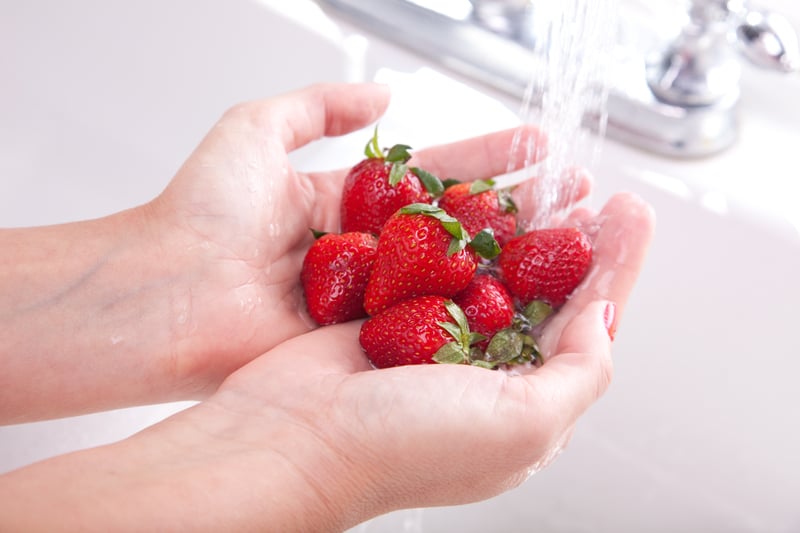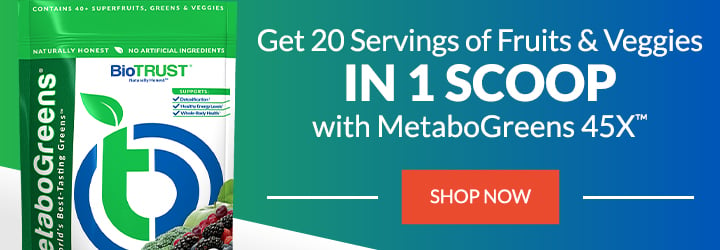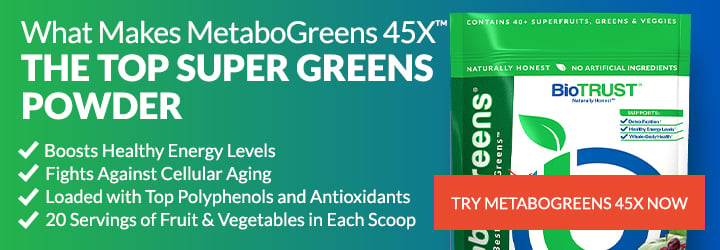What is the Best Way to Clean Fruits and Vegetables?

If you are eating a healthy diet, you are eating fruits and vegetables. There’s no debate there. But before you take a big bite of that delicious, juicy produce, you need to make sure it’s clean!
Many different germs can contaminate foods and cause disease. In fact, more than 250 foodborne diseases from bacteria, viruses, and parasites have been identified. Common symptoms include nausea, vomiting, stomach cramps, and diarrhea. 1 And anyone can get sick if they eat contaminated food. According to federal health officials, an estimated 48 million people are sickened by contaminated food each year. 2
On top of that, many folks concerned by the new coronavirus SARS-CoV-2 are wondering if there are additional precautions. Although foodborne exposure to the virus is not to be a known route of transmission, we’ll leave the general guidance to the CDC to provide the best information on how to protect yourself and your family.
It’s worth noting that neither the Food and Drug Administration nor the European Food Safety Authority (or World Health Organization, aka WHO) has found any reports of the virus being transmitted by food or food packaging. 3,4 (If you or anyone in your household is at higher risk for severe illness, you may, however, still want to take more serious precautions.)
In today’s how to clean produce article, we will cover:
- The Most Common Causes of Foodborne Illness
- 10 Tips to Clean Your Produce
- Should You Use Soap or Detergents?
- Do You Need to Wash Organic Produce?
What Are The Most Common Causes of Foodborne Illness?
That being said, it’s very important to follow good hygiene practices when it comes to handling and preparing food. These include washing your hands for at least 20 seconds with soap and water before, during, and after preparing foods as well as before eating. You’ll also want to ensure all surfaces have been cleaned with soap and hot water and/or a disinfectant solution. In addition, keep animal products, especially raw meat and eggs, separate from ready-to-eat foods.
Temperature is very relevant, too. When cooking, it needs to be high enough to kill germs. When storing, it needs to be cold enough to slow/prevent the growth of bacteria. Along those lines, make sure you refrigerate your food promptly after eating (within 2 hours at a temperature of 40˚ F or below). 5
Most people realize that animal products should be handled properly, but a surprising culprit to foodborne illness is fresh produce. In the U.S. alone, there have been several large outbreaks from contaminated fruits and vegetables, including:
- Lettuce
- Spinach
- Tomatoes
- Cantaloupe 2
Fresh produce can be contaminated by animals, substances in the soil or water, herbicides and pesticides, as well as unknowingly by workers. While you may be most familiar with salmonella and E. coli, there are hundreds of others.
Fortunately, there are ways to help clean your fruits and vegetables to help protect yourself and your family from foodborne illnesses.
The Best Ways to Clean Your Produce: 10 Tips
To ensure produce is clean and safe, the FDA and other health authorities recommend these steps, whether they’re homegrown, fresh from the farmers’ market, or found in the produce section at the grocery store:
- If possible, choose quality produce that isn’t bruised or damaged and has been refrigerated both in the store and at home.
- Before handling produce (as well as before eating), wash your hands with soap and warm water for at least 20 seconds.
- Make sure your countertop, cutting board, and utensils are clean before peeling, cutting, or chopping produce. Wash them with hot, soapy water both before and after preparing foods.
- If your produce is bruised or damaged, cut away the damaged areas before preparing. Why? Because bacteria are more likely to be hiding there.
- If you are peeling your produce, wash off any dirt and bacteria before you peel it, so the germs aren’t transferred into the vegetable or fruit via the knife.
- Gently rub your produce while under clean, running, potable water to remove dirt and wax. (You don’t need to use soap, detergent, nor a produce wash). You may also want to use a clean vegetable brush on firm produce like cucumbers, potatoes, carrots, and melons.
- Use a soft, clean cloth to dry the produce, which may further reduce the bacteria present (and help wipe off excess wax).
- If you are eating leafy foods (like lettuce or cabbage), remove the outermost leaves.
- Store any perishable produce in a refrigerator that’s set to 40˚F or lower. Avoid buying any cut produce that isn’t in the refrigerated section, and refrigerate any leafy greens within two hours of being harvested or purchased. 2,6
- Finally, the best time to wash your produce is right before cooking or eating it. Rinsing and then storing produce can create an inviting habitat for bacteria and cause fruits and vegetables to go bad more quickly.
And produce with lots of nooks and crannies (think broccoli, cauliflower, and leafy greens) can be soaked in cold, clean water for two minutes. (Put it in a clean bowl first, however, instead of your sink as your sink may not be as clean as you think.)
Fragile produce like berries, however, should not be soaked. Instead, place it gently in a colander and spray it with distilled or very cold, clean tap water.
Don’t forget to wash your thick-skinned produce as well. Many people don’t even think about it, but it’s a good idea to get in the habit of washing bananas, oranges, avocados, and melons. Whether you eat them by hand or cut through them, you could contaminate what’s inside with your hands or your knife.
What About Soap or Detergent?
Unless you’re are hoping for a session of diarrhea or vomiting, please avoid using soap or detergent to clean your fresh produce. (And even if you are looking for that type of effect, please don’t anyway!) Both detergents and bleach can be absorbed into the fruit and vegetables, and neither of these are chemicals you want to consume. In other words, the FDA has not evaluated the safety of the residues left from these chemicals. Best to avoid them.
If you just don’t think your produce is clean enough, you can find specific fruit and vegetable washes or rinses. However, in limited research, they’ve only been shown to be as good as washing with fresh, very clean tap or distilled water. 6 So, you might as well save your money.
If you still just don’t feel like water is enough, one simple, safer option is to make your own DIY vegetable wash by adding four tablespoons of baking soda to a large bowl of cold water and soaking your vegetables for about five minutes before rinsing, patting dry, and then preparing or eating immediately.
Do You Need to Wash Organic Produce?
The answer is absolutely yes! Organic produce may have less synthetic chemical residue, but they are still exposed to microbes and organic fertilizer and other organic chemicals.
That said, if you are buying any of the “Dirty Dozen” fruits and vegetables that are conventionally grown, they’re more likely to contain pesticide residue. So, you may want to take special care as you wash them. For 2020, the Dirty Dozen includes:
- Strawberries
- Spinach
- Kale
- Nectarines
- Apples
- Grapes
- Peaches
- Cherries
- Pears
- Tomatoes
- Celery
- Potatoes
- Hot Peppers
And if you can bring your own reusable cloth shopping bag to take your groceries home, that’s awesome. However, you’ll want to make sure those are cleaned regularly too.
To recap, remember to wash your hands with soap and water before you rinse your produce (rub it gently under water or use a brush if it has a thicker skin). Then you can peel or cut it before you go ahead and bite into that healthy, delicious, fresh produce! (Or, add it to the recipe you’re preparing.)







